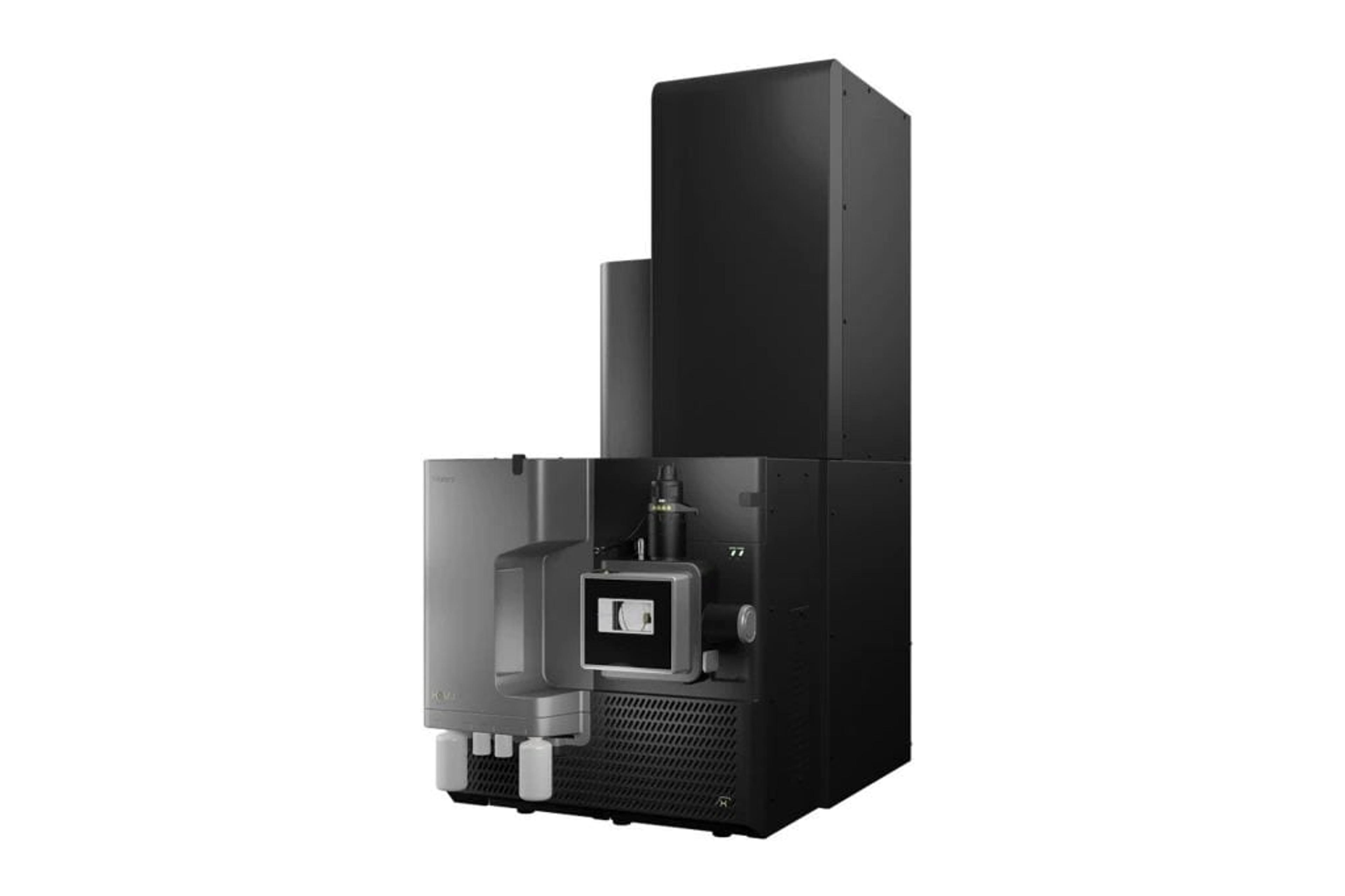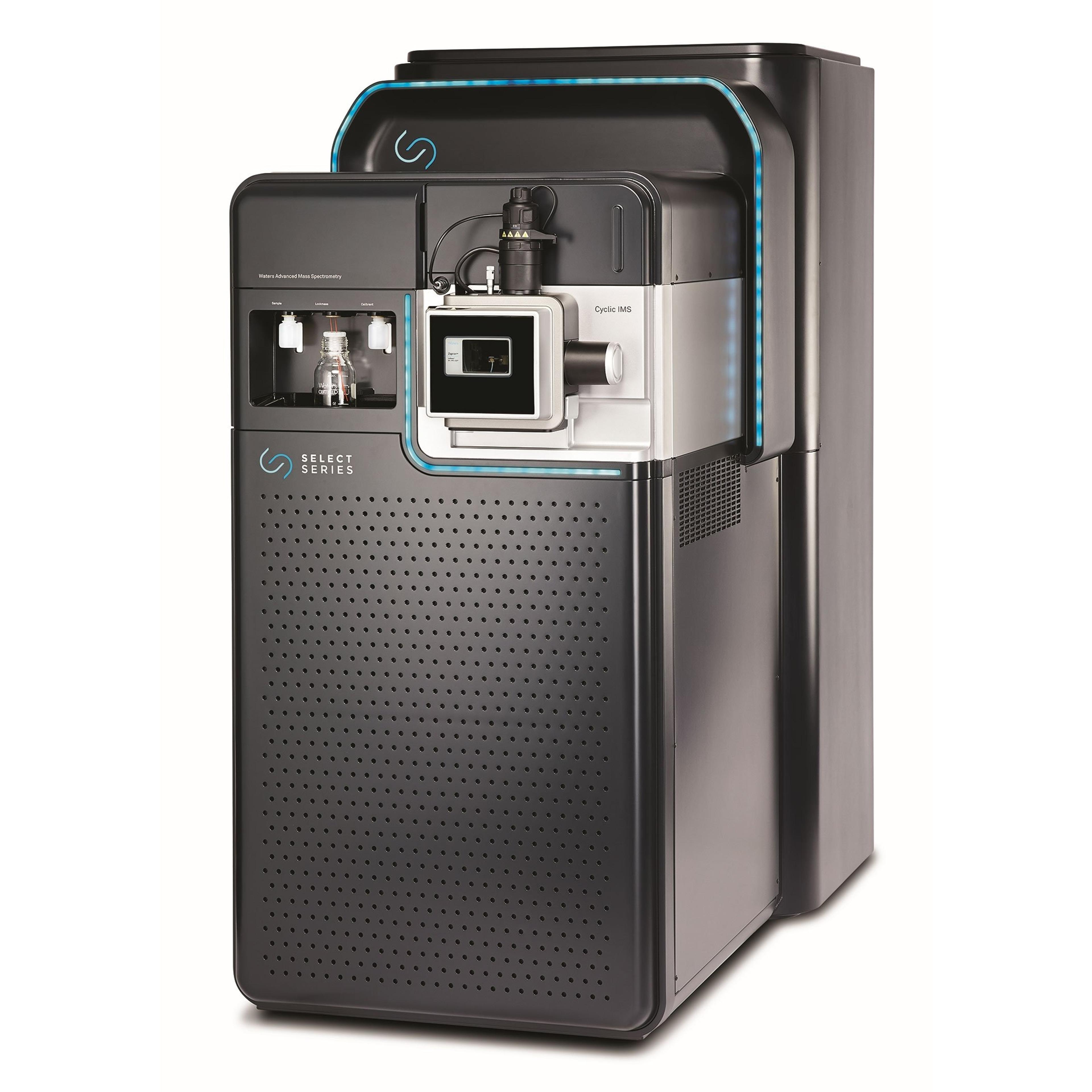Unlock the future of PFAS detection with high-resolution mass spectrometry
Discover how Waters' HRMS innovations are enhancing the accuracy and scope of PFAS detection and analysis
5 Aug 2025
Per- and polyfluoroalkyl substances (PFAS) are under increasing scrutiny due to their widespread environmental presence and associated health risks. As regulations tighten, the demand for precise detection methods is rising. High-resolution mass spectrometry (HRMS) stands out as a powerful tool for PFAS analysis, offering more specificity and comprehensive characterization of PFAS contamination compared to traditional methods. Its effectiveness shines in analyzing complex samples, identifying multiple PFAS compounds, even minor components, and distinguishing similar substances.

Michael McCullagh, Principal Consulting Scientist at Waters Corporation (left) Sarah Dowd, Principal MS Applications Specialist at Waters Corporation (right)
To explore the advantages of HRMS for PFAS analysis, we spoke with Sarah Dowd, Principal MS Applications Specialist, and Michael McCullagh, Principal Consulting Scientist at Waters Corporation. They shared valuable insights into HRMS capabilities and its crucial role in addressing the pressing challenges of PFAS contamination.
A growing public health concern
With over 23 years of experience at Waters Corporation, Michael McCullagh has an extensive background in mass spectrometry, covering impurity profiling, pesticide screening, food analysis, and non-targeted PFAS analysis. He highlights the rising interest in PFAS analysis, stating, “The impact upon human population health from decades-long environmental exposure to PFAS is the driving force for the increasing interest in PFAS analysis.” The Environmental Protection Agency (EPA) maintains a database of approximately 14,800 PFAS compounds, and their environmental mobility makes contamination difficult to manage. This environmental challenge is compounded by the growing list of health issues linked to PFAS, including cancer and developmental problems, underscoring the urgent need to understand their impact.
PFAS are a hot topic right now, primarily because they are everywhere. The challenge is that these anthropogenic chemicals persist in the environment and do not degrade.
Sarah Dowd, Principal MS Applications Specialist Waters Corporation
Sarah Dowd, specializing in food and environmental applications, focuses on supporting customers as they integrate new mass spectrometers into their laboratories. She notes, “PFAS are a hot topic right now, primarily because they are everywhere. The challenge is that these anthropogenic chemicals persist in the environment and do not degrade. As a result, these compounds are bioaccumulating.” Dowd explains that while customers actively search for PFAS compounds in various matrices at low levels, focusing only on a short list of known compounds risks missing emerging PFAS.
Advancements in HRMS
In the past two decades, HRMS, particularly quadrupole time-of-flight mass analyzers (Q-TOF), has emerged as a potent screening tool. These systems use non-targeted ‘wide scope’ data acquisition to detect thousands of compounds in a single analysis. McCullagh explains, “The purpose of a screening method is to rapidly detect and identify target compounds in the sample under investigation, with the aim to minimize false detection rates.” Routine mass accuracy has improved from parts per million (ppm) to parts per billion (ppb), enhancing identification confidence for small molecules like PFAS. Dowd also highlights the power of HRMS, stating, “High-resolution mass spectrometry gives us accurate mass measurements that help distinguish PFAS compounds from others in a sample. PFAS have unique chemical properties we can exploit to find unexpected or unknown PFAS compounds.”
Waters Corporation has been instrumental in developing advanced mass spectrometry solutions tailored for PFAS analysis. HRMS instruments, such as the Xevo™ G3 QTof and the SELECT SERIES™ Cyclic™ IMS, offer unparalleled capabilities to address the growing demands of PFAS analysis. The Xevo G3 QTof enhances qualitative and quantitative capabilities, ideal for both screening and targeted applications. Moreover, it delivers consistent data quality, crucial for maintaining long-term productivity. The SELECT SERIES Cyclic IMS, which combines cyclic ion mobility with state-of-the-art time-of-flight mass spectrometry, offers the additional advantage of unique separation capabilities, particularly beneficial for resolving isomers and providing cleaner mass spectral data.
McCullagh emphasizes the benefits of Waters’ HRMS systems, “The resolving power achievable with the Xevo G3 QTof, SELECT SERIES Cyclic IMS and Xevo™ MRT Mass Spectrometer helps mitigate false detections and identify unknowns by distinguishing isobaric matrix interferences from analytes of interest.”

PFAS are man-made chemicals in consumer products and environmental contaminants. Accurate analysis is essential for identifying these pollutants, ensuring regulatory compliance, and protecting public health.
The role of ion mobility in PFAS analysis
HRMS has been integrated with ion mobility (IM) since 1962. There has been a recent surge in the use of ultra-performance liquid chromatography cyclic ion mobility (UHPLC-cIM), which enables enhanced separation before mass measurement. IM provides an additional separation dimension based on ion characteristics and yields collision cross-section (CCS) values, improving identification accuracy for small molecules like PFAS.
McCullagh expands on this, stating, "Ion mobility separation is dependent on factors such as the mass of the ion, charge, dipole moment, and shape, offering a complementary dimension of separation.” The use of CCS libraries enhances specificity, reduces false detections, and aids in identifying unknowns. Reproducible CCS values from the SELECT SERIES Cyclic IMS mass spectrometer demonstrate reliability in distinguishing PFAS isomers.
Dowd explains, “We found new PFAS compounds in environmental samples from a ski resort that wouldn’t appear in any targeted method. Using ion mobility and HRMS allowed us to discover these compounds thanks to accurate mass measurements, relevant fragmentation, and insights from retention time and CCS measurements.”
HRMS vs. tandem quadrupole MS
While both HRMS and tandem quadrupole mass spectrometry are highly effective, HRMS excels in providing broader, more comprehensive PFAS analysis. Tandem quadrupole mass spectrometers are invaluable for targeted quantitation of known PFAS compounds, offering precise measurements essential for regulatory compliance. However, as McCullagh notes, “Tandem quadrupole mass spectrometry is primarily effective for targeted analysis of known compounds but has limited capabilities for identifying unknown PFAS and understanding the full extent of environmental contamination.”
Tandem quadrupole mass spectrometry is primarily effective for targeted analysis of known compounds but has limited capabilities for identifying unknown PFAS and understanding the full extent of environmental contamination.
Michael McCullagh, Principal Consulting Scientist Waters Corporation
The future of PFAS analysis
McCullagh envisions a future where non-targeted strategies play a larger role, “Targeted analysis meets the current regulatory challenge of detecting PFAS. However, EPA Method 1633 covers only 0.003% of the EPA PFAS database. Non-targeted analysis will generate information for both known and unknown compounds, contributing to scientific databases.” Dowd shares a similar view, “As we see not only replacement PFAS being generated but also breakdown products, we must address contamination without creating new problems. It’s a concerning but real possibility.”
She foresees a future of significant expansion in PFAS analysis, where the scope of routinely targeted compounds will grow beyond current limitations. With an estimated 14,000 PFAS compounds identified in existing databases, the current targeting represents only a small fraction of the vast chemical landscape that demands deeper exploration.
The evolving field of PFAS analysis requires advanced analytical tools to address the diverse and persistent nature of these compounds. While tandem quadrupole mass spectrometers provide precise quantitation for known PFAS, HRMS is indispensable for comprehensive detection, identification, and quantification of both known and unknown species. Waters Corporation’s innovative HRMS solutions, including the Xevo G3 QTof and SELECT SERIES Cyclic IMS, are instrumental in expanding the scope of PFAS research, contributing to better environmental and public health outcomes.


